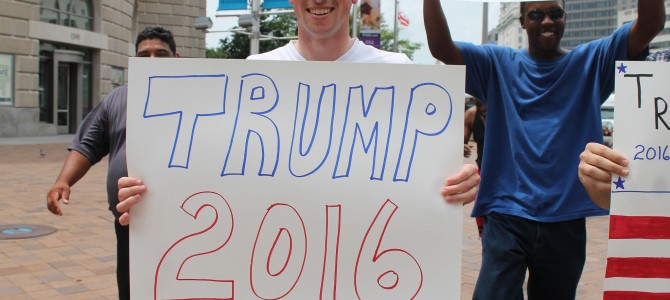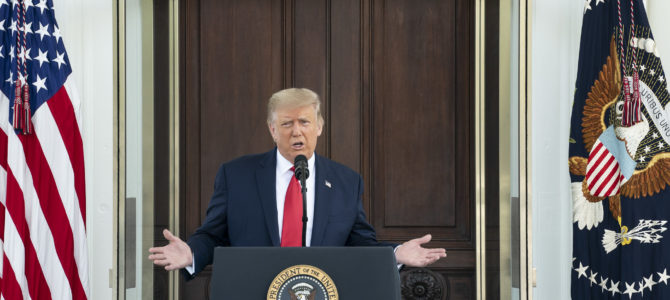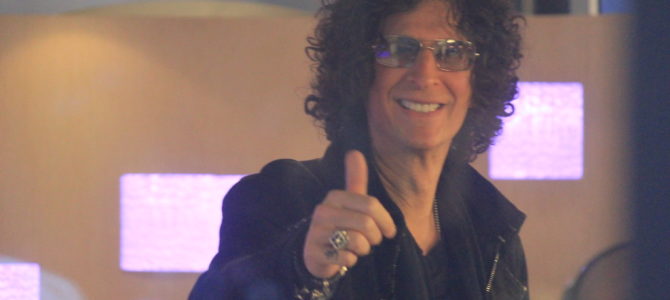
Donald Trump—or at least the public Trump—is not a man for subtlety. While his campaign for the GOP Presidential nomination has provoked (justified) criticism, much of this criticism matches the man and his supporters for its lack of nuance.
Indeed, many of the barbs launched at Team Trump make one or two central errors. First, Trump supporters are not monolithic, causing some supporters to feel offended by critiques that were, in fact, not targeting them. Second, many of the critics of Trump and his supporters make assumptions about his likely core demographic, leading to critics and supporters arguing past each other. As someone who has no intention of voting for Trump, I find myself frustrated by the degree to which so many otherwise sharp pundits and politicians, apparently vexed by The Donald, make these errors.
Who’s Tooting Trump’s Horn? Meet the ‘Disaffecteds’
Proceeding in reverse order, the basic profile of a Trump supporter is now fairly well-known: skewing male, spanning ideological self-identification, independent, less schooled, and probably less likely to vote in a Republican primary. It is also obvious that Trump supporters are attracted primarily by Trump’s focus on immigration (the popularity of his current position very much dependent on how the issue is framed).
This demographic—or some version of it—is not new to American politics. The Pew Research Center has previously identified a similar group as “Disaffecteds.” Ironically, Pew’s current typologies refer Hard-Pressed Skeptics as mostly a Democratic counterpart of this demographic. The Trump phenomenon demonstrates that this faction has not disappeared within the GOP, so Pew’s older numbers from 2005 and 2011 can be instructive. This group comprises roughly 10 percent of registered voters, and its influence could thus double in a party primary poll. Like it or not, this group is deeply concerned about the impact of immigration policies on jobs. And they fit the stereotype: They are more male, more independent, less schooled, and less likely to vote.
All these factors parallel what polls tend to show regarding Trump supporters, which makes other characteristics of Disaffecteds relevant to a discussion about Trump’s support. Disaffecteds disapprove of the welfare state, but they endorse entitlements like Social Security and Medicare. They are much more likely than the group Pew pegs as “Staunch Conservatives” to support labor unions, as well as taxes as part of a budget solution. However, the Disaffecteds split on abortion, with a slight majority favoring legal abortion in most or all cases. They are less critical of Obamacare than other segments of the GOP coalition, but they are among the most critical of Wall Street. They watch Fox News as much as other Republicans (and Hard-Pressed Democrats), but few of them listen to Rush Limbaugh or Glenn Beck. And lastly, more of them consider themselves conservative than consider themselves conservative Republicans.
What Happens When You Assume…
Yet many of Trump’s critics and rivals presume his supporters are Staunch Conservatives, when Disaffecteds differ in clear and important ways. True Trump supporters may not be dissuaded by attacks on his more progressive positions, because they either do not consider these issues important, or their own views actually coincide with Trump’s. Indeed, it should not be presumed that the average person—as opposed to a political junkie—is much concerned with policies at this point in the cycle, except for those receiving broad media coverage (i.e. immigration).
On the other hand, we should also not assume that if Trump flames out—which seems likely, given this strong field of candidates—his supporters will necessarily flow into the camp of the prevailing Republican candidate. Indeed, the Real Clear Politics average of polls suggests Trump’s rise has depressed most of his rivals in the field, regardless of policy or ideology. That, or it’s expanded the pool of people willing to tell pollsters they will vote in the GOP primaries.
Trump’s presence helped bring in a record number of viewers for the first big Republican debate, something that’s clearly not lost on the media. Indeed, even media outlets not traditionally appealing to Disaffecteds are paying attention. After all, the media’s business model depends attracting eyes and ears, regardless of whether the people attached to them ultimately vote. As Rush Limbaugh once remarked:
“Do you know what bought me all this” he asked, waving his hand in the general direction of his prosperity. “Not my political ideas. Conservatism didn’t buy this house. First and foremost I’m a businessman. My first goal is to attract the largest possible audience so I can charge confiscatory ad rates. I happen to have great entertainment skills, but that enables me to sell airtime.”
Having singled out Rush, who has been fairly supportive of Trump, I should note that Rush’s current stance may not merely be a mercenary search for a broader audience. Recall that in 1992, he endorsed Pat Buchanan—who ran a campaign similarly aimed at Disaffecteds—over incumbent George H. W. Bush.
Still, it would also be misguided to presume that all of Trump’s support comes from Disaffecteds. Trump’s celebrity status plays a part here beyond the Disaffecteds, although Frank Luntz’s post-debate focus group (and Trump’s slight overall decline in the days afterward) may suggest some of that support will dissipate as people pay more attention to the campaign.
Trump’s Demise Isn’t Necessarily the GOP’s Gain
On a related point, the Cook Political Report’s Amy Walter suggested that roughly half of Trump’s supporters are more attracted by his style than his policy positions (such as they may be discerned). Some see this as a danger to the Republic, but this phenomenon is not particularly new. Indeed, consider JFK, H. Ross Perot, John McCain or even Barack Obama as just a few recent precedents (two of whom also cultivated the image of the straight-shooter).
The success Trump has achieved by being the most bellicose of the field—particularly in criticizing the current Congressional leadership—is due, at least in part, to an indictment of that leadership’s coalition management. Such tactics appeal to what Pew has labeled “Main Street Republicans” or “Business Republicans,” but offers little to Staunch Conservatives, Disaffecteds or Libertarians. Thus, this seems like a poor way to manage a big tent.
Moreover, as Trump’s more vocal critics have discovered, there are white supremacists and neo-Confederates eager to hitch themselves to Trump’s bandwagon. It’s not shock that this will happen when a political neophyte not only rambles on about Mexicans raping women, but also surges in the polls because of it. As deplorable and undesirable as this is, it is also unfortunate that critics of Trump and his supporters frequently conflate Disaffecteds with Staunch Conservatives or—even more extreme—racists. This is not to claim there is no overlap among these groups. Pew’s typologies, while helpful, are necessarily generalizations, and real people will not always fall neatly into them. And racists aren’t exclusive to the right—they are present across the political spectrum.
Now, if Republicans claim that only 25 percent of Americans support increased immigration, then the party as whole will probably not get much traction suggesting the other 75 percent are racists. Indeed, the Democrats already own that niche anyway. But if the Republican Party wants to court Trump’s more respectable supporters—and thus stand a better chance in the general election—it should study who these voters actually are, rather than assuming they already know.









